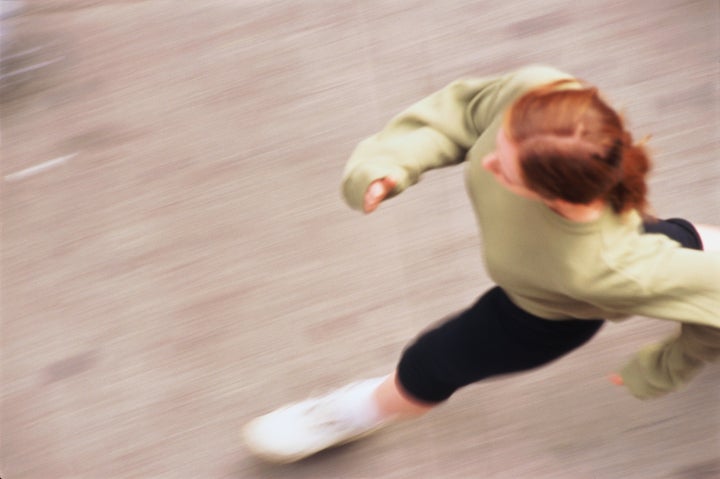
You’re reading Move, the nudge we need to get active, however makes us happiest and healthiest.
The humble walk has been a life-saver for many throughout the pandemic – whether your stroll of choice has been first thing when the sun’s rising, a quick 20-min power trot on your lunch break, or an after-dinner amble.
Many of us are now familiar with the well-trodden paths near our areas. You might have even switched up routes between lockdowns to bring variety back into your life. And for many, walks are here to stay – even as normality returns.
Next time you head out, try turning your wander into a workout by supercharging your walk. We asked fitness experts how you can get the maximum health benefits from your outing – because while walking definitely counts as exercise, not all types of walk are created equal.
Benefits of a daily walk include maintaining a healthy weight, preventing and managing long-term health conditions (like diabetes, arthritis and hypertension), lubricating the joints and strengthening the bones and muscles, says Kenny Butler, head of health and wellbeing development at UKactive.
But perhaps the biggest benefit of walking is its impact on our mood, especially walks in “green and blue spaces” – we’re talking fields, parks, forests, coastline and anywhere near water. “If you can do brisk walking for 10 minutes a day, seven days a week,” says Butler, “then it has all those benefits we just covered.”
Here are five ways to get a better workout out of your daily walk. Your body will thank you for it.
1. Pick up the pace
A slow stroll along the local fields might be pleasant, but the health benefits of walking are best realised when you walking briskly, says Butler. You should still be able to talk, but you should also experience an increase in your breathing while you’re moving. If you’re too breathless, you’re overdoing it.
Basically, you need to speed things up a little – this will raise your heart rate, helping you to reap those cardiovascular benefits. But you should still be able to have a chat if you’re walking with someone else.
If you can’t keep this pace, Jemma Thomas, personal trainer and founder of Jemma’s Health Hub, recommends alternating between a really brisk power walk for two minutes, then a slower walk for two minutes, and back again.
This gets the heart rate up, then allows recovery, she says, and can be a helpful way to boost fitness.
“People don’t associate walking with cardiovascular fitness,” says Butler. “A stroll will not get you that cardio workout, but taking it a small level above a stroll – that’s a cardio workout. That has the intensity to challenge the cardiovascular system enough to increase the demands of the muscles and the heart.”
2. Swing it!
If you’re picking up the pace, it can also help to exaggerate your arm swinging while you’re at it to challenge the upper body. And if you’re feeling like really going for it (and don’t mind what anyone else is thinking), grab a few light hand weights and add those to your walk to intensify the workout, says Thomas.
3. Make it social
Workouts are best when they boost your body and your mind. If you can find a local walking group – or a walking buddy – not only will you be getting all of the exercise benefits, you’ll also be enjoying the social benefits too, which is great for your mental health. “You can’t underestimate the benefits of a social walk,” says Butler. “That has huge social benefits and will lift the mood.”
It also helps you to be more accountable as you’re less likely to duck out of a walk if you’ve got plans to meet others.

4. Up the distance
You might have been doing the same-old 2km route over the past year. So, start pushing yourself to walk for longer each time.
Increasing the distance gradually gives you greater health benefits, says Butler, and helps fix the issue of de-conditioning which has effected many in lockdown. The lack of physical activity has caused a decline in the physical function of the body – and it’s not good news. But gradually increasing your walking distance can definitely help.
5. Increase the incline
If you’ve got a hill nearby, even better. The more challenging the terrain, the better the workout. “Try to find a steeper route and really power walk that route with big strides including arm moves where your arms are pumping through at your sides to get the heart rate up more,” says Thomas. “The steepness of the hill will be great for conditioning muscles like the glutes and hamstrings.”
Move celebrates exercise in all its forms, with accessible features encouraging you to add movement into your day – because it’s not just good for the body, but the mind, too. We get it: workouts can be a bit of a slog, but there are ways you can move more without dreading it. Whether you love hikes, bike rides, YouTube workouts or hula hoop routines, exercise should be something to enjoy.
